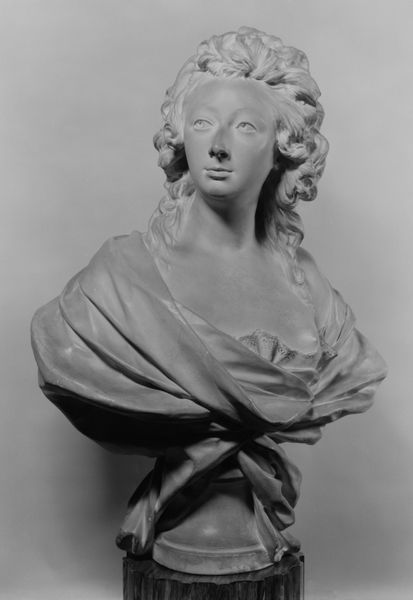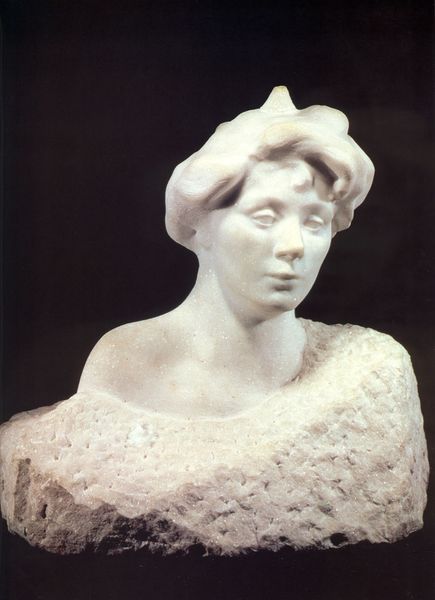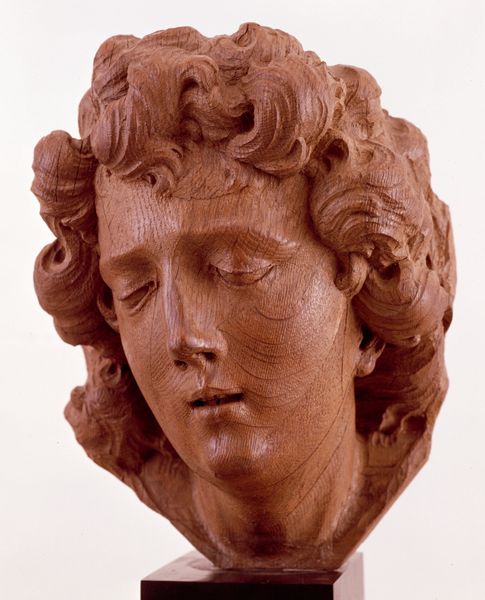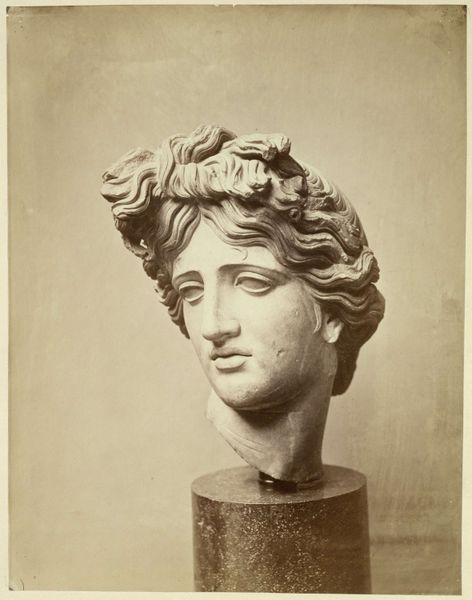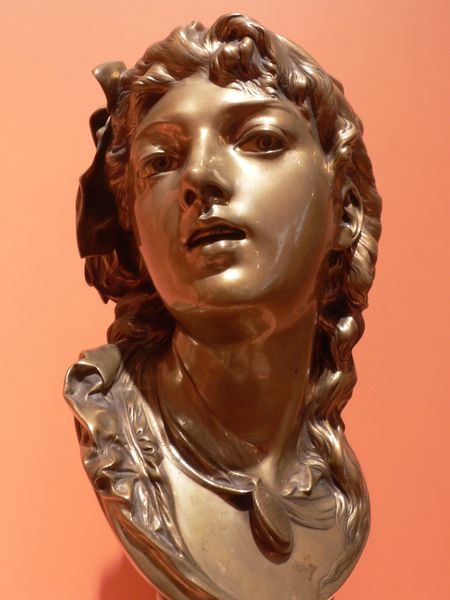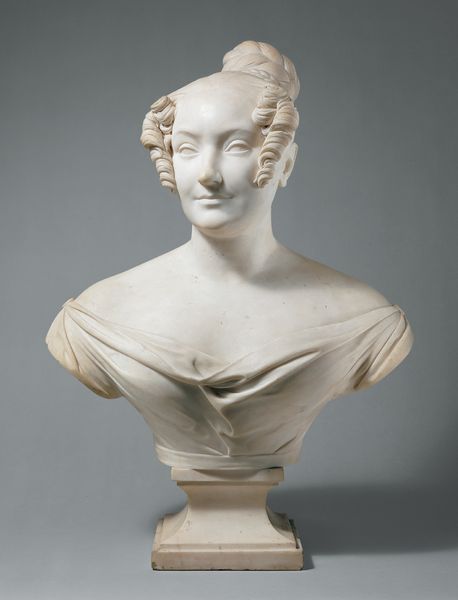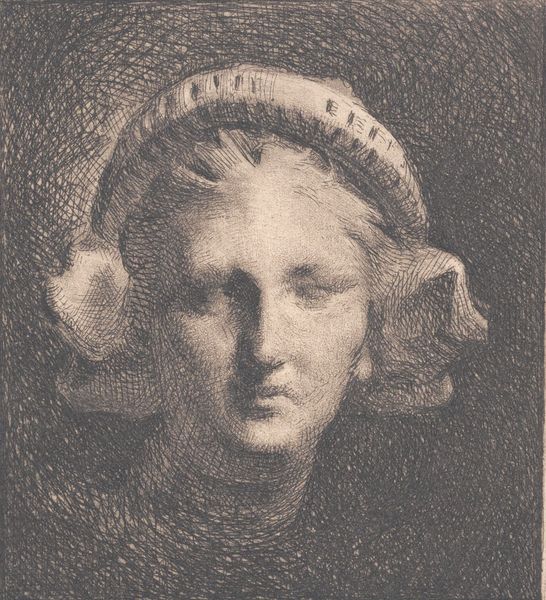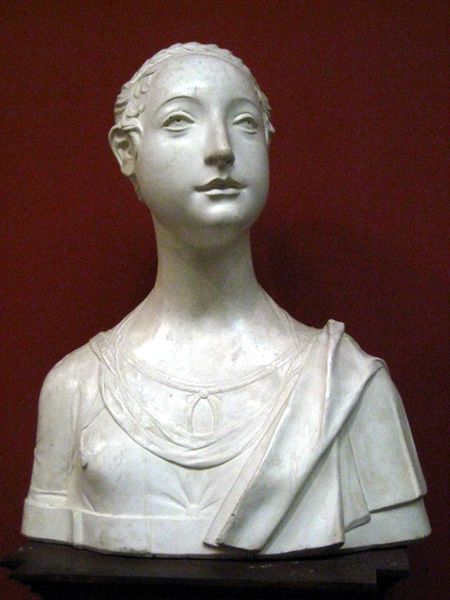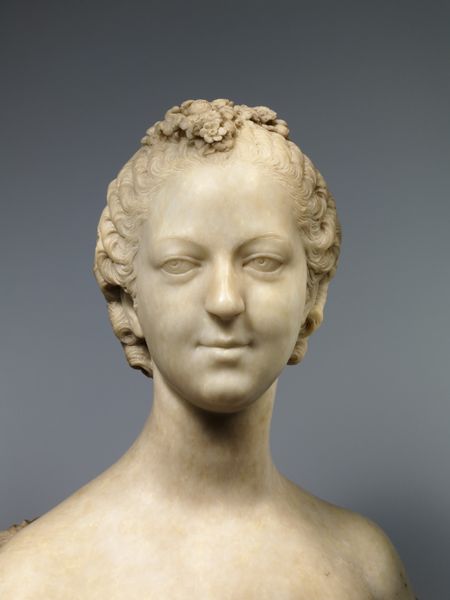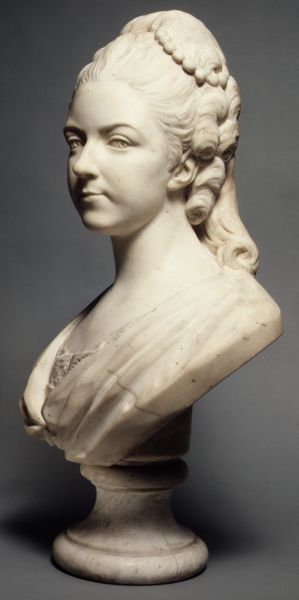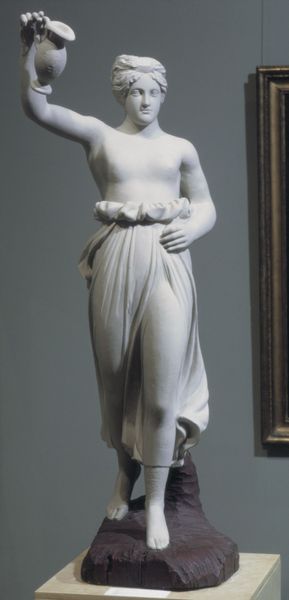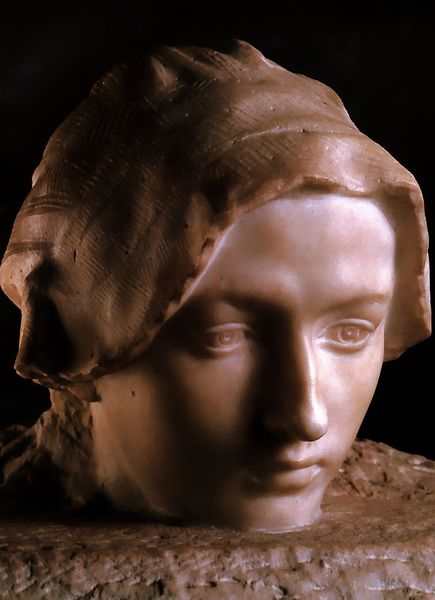
Bust of Costanza Buonarelli 1635
0:00
0:00
gianlorenzobernini
Bargello (Palazzo del Popolo), Florence, Italy
carving, sculpture, marble
#
portrait
#
statue
#
carving
#
baroque
#
sculpture
#
charcoal drawing
#
sculpture
#
marble
#
italian-renaissance
Copyright: Public domain
Editor: Standing here, it's breathtaking to view Bernini's marble "Bust of Costanza Bonarelli," crafted around 1635. The realism is arresting. Her gaze feels…knowing. How do you interpret the emotional weight carried in her expression, especially considering the cultural context of the time? Curator: That's a fascinating question. Notice how Bernini deviates from typical formal portraiture. The slightly parted lips, the tousled hair – these elements contribute to a sense of immediacy. But look deeper: is it defiance, or perhaps a more complex sense of melancholy tinged with worldliness? In the Baroque period, representations were less about capturing simple likeness, and more about invoking emotions, drawing viewers into an experience. What kind of experience do you think the sculptor seeks to conjure in his audience? Editor: That idea of "drawing viewers into an experience" really hits home. The Baroque aesthetic I suppose relies heavily on evoking emotion... It's interesting to view that Baroque concept of theater in a portrait sculpture. Does the visual dynamic and use of emotion, almost beyond reality, symbolize anything in particular about societal values and memories from this time period? Curator: Absolutely. We should recall Bernini’s unique context. He had a torrid affair with Costanza Bonarelli, the very woman he sculpted in marble. A scandal it was. Do you sense conflicting notions about class and identity within the portrait's subtle visual cues? Consider the story of this representation beyond the sitter herself. Editor: I'm seeing a whole different dimension now! It seems he used these visual cues to represent the complexity of emotion as felt during a scandal. To view societal memory in this way through symbolic clues really elevates this artwork beyond its form and aesthetic. Curator: Indeed. The personal intertwined with the social, the fleeting captured in stone. Hopefully next time you approach an artwork you can feel confident exploring those cultural layers it represents!
Comments
No comments
Be the first to comment and join the conversation on the ultimate creative platform.
